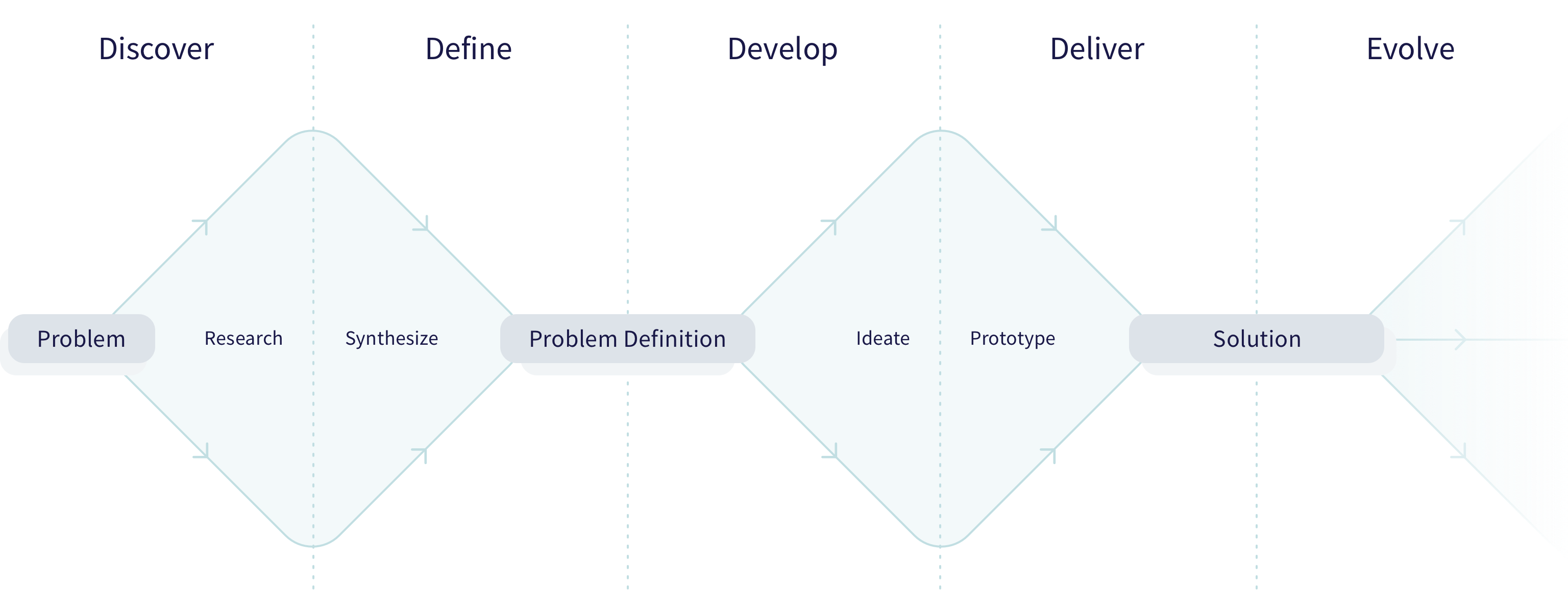Design process
Collected best practices and methodologies recommended by Volue's Design department and the world's leading design experts for successful product creation.
Overview

Design Council’s Double Diamond conveys a design process. The two diamonds represent a process of exploring an issue more widely or deeply (divergent thinking) and then taking focused action (convergent thinking).
It is not a linear process as the arrows on the diagram show. Many organisations learn something more about the underlying problems that can send them back to the beginning. Making and testing very early stage ideas can be part of discovery. We are always getting feedback on how products and services are working and iteratively improving them.
🔍 Discover#
The beginning of each design project is marked by an exploratory phase where ideas and inspiration are collected. This discovery phase can be triggered in many different ways, such as social trends, novel technology, the launch of a competing service, etc.
In the Discovery phase, we begin to identify the problem, opportunity, or need to address it, as well as define some of the boundaries of the solution space.
-
Identify the problem, opportunity, or needs that must be addressed through design
-
Define the space of the solution
-
Build a rich resource of knowledge with inspiration and insights
🖊️ Define#
The initial Discovery phase tries to open up and explore the challenge to identify problems and opportunities. The Define stage channels them into actionable tasks.
A large number of ideas and findings are analyzed and structured into a reduced set of problem statements. These are aligned with the organization’s needs and business goals to identify what to move forward.
The Define phase results in a clear definition of the fundamental challenge or problem being addressed through a design-driven product or service.
-
Analyze the results of the Discovery phase
-
Synthesize findings in a reduced number of opportunities
-
Define a clear summary for the signature of all stakeholders
👩💻 Develop#
The Development phase takes the initial design brief and through an iterative development and testing process, refines the product or service concepts until they are ready for implementation.
Using creative design and techniques, the design team and stakeholders develop individual service components in detail and ensure that these are linked together to form a holistic experience.
The third phase marks a development period where solutions are created, prototyped, tested, and iterated. This trial and error process helps designers improve and refine their ideas.
-
Develop the initial summary on a product or service for implementation
-
Design service components in detail and as part of a holistic experience
-
Iteratively test concepts with end users
📦 Deliver#
In the delivery phase, the product or service is launched and addresses the needs identified in the discovery phase.
It is essential to ensure that systems are in place to capture user feedback, especially for services. The delivery phase is also the point to feedback lessons from colleagues and partners, sharing new knowledge, knowledge tools, or working ways.
The double diamond model's final quarter is the delivery phase, where the resulting product or service is finalized and launched. During this stage, the main activities and objectives are final test, approval and launch, objectives, evaluation and feedback loops.
-
Taking product or service to launch
-
Ensuring that customer feedback mechanisms are in place
-
Share the lessons of the development process in the organization
🚀 Evolve#
The delivered product or service value must be continuously improved to keep it relevant to our customers in the evolving phase.